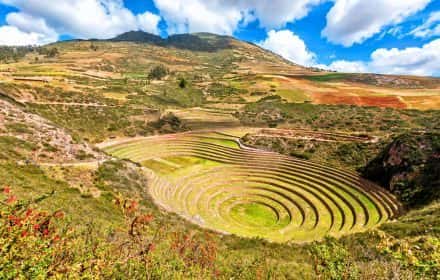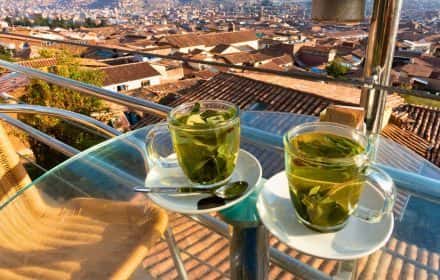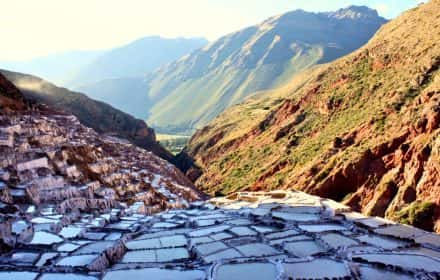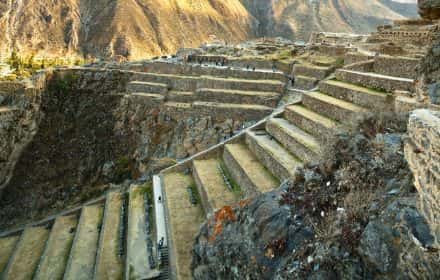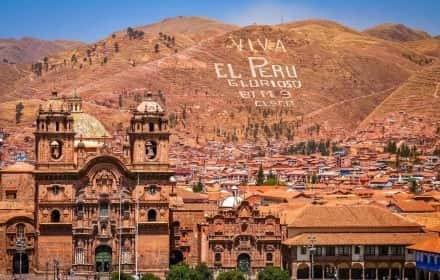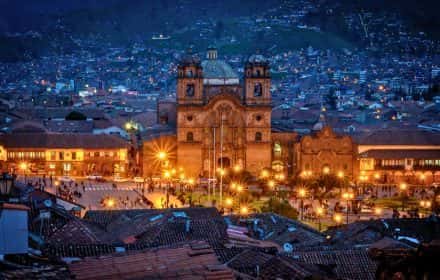This site uses affiliate links, meaning that if you make a purchase through our links, we may earn an affiliate commission.
Discover the gems of the Sacred Valley, a region nestled amidst the majestic peaks of the Peruvian Andes.
While Machu Picchu often steals the spotlight, a wealth of top-rated attractions in the Sacred Valley are equally captivating and deserving of exploration. From ancient ruins and cultural sites to breathtaking natural wonders, this mystical valley is a treasure trove of historical and scenic delights.
In this blog post, we invite you to discover the hidden gems and lesser-known marvels that make the Sacred Valley a truly unforgettable destination. So, put Machu Picchu aside for a moment and let us guide you through a journey of discovery as we unveil the top-rated attractions that await your exploration in this sacred land.
GOOD TO KNOW: If you are starting your Peru adventure in Lima, then make sure to read 22 Expert Lima Tips for First-Time Visitors (Unlock Lima’s Treasures)
- 1. Honorable Mention: Machu Picchu - The Crown Jewel of the Sacred Valley
- 2. How to Get Around in the Sacred Valley: Transportation Options
- 3. Where to Stay in Sacred Valley: Choose Cusco's San Blas District as Your Base Camp
- 4. 13 Top-Rated Attractions in the Sacred Valley ( Besides Machu Picchu)
-
- 4.1. The Twelve-Angled Stone: A Testament to Inca Engineering
- 4.2. Coricancha – Temple of the Sun: A Sacred Inca Site in the Heart of Cusco
- 4.3. Sacsayhuaman: Ancient Ruins and Inca Engineering Marvel
- 4.4. Qenko: Mystical Encounters at the Temple of Sacrifice
- 4.5. Puka Pukara: Exploring the Enigmatic Red Fortress
- 4.6. Tambomachay: The Mystical Waters of the Inca
- 4.7. Pisac: Ancient Ruins and Vibrant Markets
- 4.8. Chinchero: A Cultural Haven of Textiles and Inca Heritage
- 4.9. Maras: Salt Ponds and Scenic Splendor
- 4.10. Moray: Exploring Agricultural Ingenuity and Ancient Experimentation
- 4.11. Ollantaytambo: Exploring Ancient Ruins and Living History
- 4.12. Raqchi: Discovering the Temple of Wiracocha
- 4.13. Tipón: Unveiling the Engineering Marvels of the Inca
- 5. Intrepid Scout's Tips for Visiting Ollantaytambo
Honorable Mention: Machu Picchu - The Crown Jewel of the Sacred Valley
No exploration of the Sacred Valley would be complete without mentioning its crown jewel: Machu Picchu.
This ancient Inca citadel, perched high in the Andes Mountains, is undoubtedly one of the world’s most iconic archaeological sites. Its awe-inspiring beauty, mysterious history, and breathtaking location have made it a bucket-list destination for travelers from around the globe.
Machu Picchu’s remarkable preservation and its enigmatic past continue to captivate the imaginations of visitors. This UNESCO World Heritage Site is renowned for its stunning terraces, intricate stone structures, and panoramic views of the surrounding mountains and valleys. It is a testament to the architectural prowess and engineering ingenuity of the Inca civilization.
PRO TIP: If you’re eager to delve deeper into the wonders of Machu Picchu, we invite you to check out the following posts:
1. BEST TIME to VISIT MACHU PICCHU (Top #1 Month for Ultimate Adventure): Find out the best time to visit Machu Picchu to avoid downpours and heavy fog.
2. Best SELF-GUIDED MACHU PICCHU TOUR (Explore 11 Marvels of Inca Citadel): Embark on a self-guided tour of Machu Picchu and uncover 11 marvels of Inca Citadel.
3. How to See the Mesmerizing SUNRISE at MACHU PICCHU (9 Steps to Witness the Magic): Witness the sunrise at Machu Picchu and find out how to do it in 9 easy steps.
4. 9 Best PHOTOGRAPHY LOCATIONS at MACHU PICCHU (+Useful Photo Tips): Find out where the best photo locations are at Machu Picchu and follow my photo tips to capture stunning images.
5. How to Reach Machu Picchu Without Hiking (2 Easy Steps!): Dive into ways of reaching Machu Picchu without making a long strenuous hike. Save your energy for exploring the Inca citadel!
6. Hiking to MACHU PICCHU from AGUAS CALIENTES in 4 Easy Steps: Discover a short picturesque hike from Aguas Calientes that is going to take you right up to Machu Picchu.
7. 7 Fun and Cool THINGS to DO in AGUAS CALIENTES (Besides Machu Picchu): Find out all the fun and cool things to do in Aguas Calientes – the gateway to Machu Picchu.
These posts provide valuable insights, tips, and personal experiences that will enhance your understanding and appreciation of this extraordinary site. So, take a moment to read through them before embarking on your own Machu Picchu adventure.
However, if you are eager to explore more of the Sacred Valley beyond Machu Picchu, you are in for a treat!
While Machu Picchu rightfully claims its place as the most renowned attraction, the Sacred Valley offers a wealth of other top-rated destinations that deserve your attention. From ancient ruins and cultural sites to breathtaking natural wonders, this mystical valley is brimming with captivating attractions waiting to be discovered.
How to Get Around in the Sacred Valley: Transportation Options
Before we dive into all the top-rated attractions in the Sacred Valley of the Incas, it is important to cover all your transportation options:
- With a Private Guide and a Driver
Having a private driver and a guide is the best way to go. This option gives you total flexibility. Also, having a knowledgeable guide by your side is simply invaluable.
PRO TIP: If you are staying in one of the hotels in Cusco, I am sure that your hotel will be more than happy to arrange for you a driver and a guide. Needless to say, this is an expensive option, but it is all worth it.
- On a Tour
Plenty of full-day or half-day tours stop at all major attractions in Sacred Valley. Here are some of the tours worth checking out:
Pisac Inca Town, Artisan Market, and Ollantaytambo Full-Day Tour from Cusco: This is a full-day tour to the Sacred Valley, Pisac, and Ollantaytambo from Cusco. You will visit the local market in the picturesque town of Pisac, and enjoy a guided tour of Ollantaytambo and the Temple of the Sun Guide. Guide, lunch, and round-trip hotel transfers are included.
The Ultimate Sacred Valley tour: 1 day of Inca history, lifestyle, landscapes: This comprehensive full-day excursion is ideal for travelers with limited time in the region. Alongside a small group and local guide, visit Maras, Moray, Pisac, and Ollantaytambo in an unconventional order to avoid other tour groups and enjoy a more intimate experience.
- By Taxi
If you do want to hire a private driver and a guide or go on an organized tour, then book a taxi and stop at all the major attractions in Sacred Valley of the Incas. You will always be able to hire a guide right at the entrance to all of the major attractions in Sacred Valley.
PRO TIP: I would recommend that you ask your hotel to get a taxi for you.
- By Colectivo
There is a colectivo station on Avenida Grau in Cusco. Now, something to keep in mind is that colectivo do not leave until they are full. You will probably need a few days to cover all the major attractions if you are using colectivo.
Where to Stay in Sacred Valley: Choose Cusco's San Blas District as Your Base Camp
When deciding on the ideal place to stay in the captivating Sacred Valley, look no further than the vibrant district of San Blas in Cusco. This bohemian neighborhood is a hidden gem that offers a unique and unforgettable experience for visitors seeking a blend of charm, culture, and convenience.
San Blas, also known as the artisans’ neighborhood, is nestled on a hill just a short walk from Cusco’s main square, the Plaza de Armas. This picturesque district boasts narrow cobblestone streets lined with vibrant buildings, art galleries, and workshops where talented local artisans create beautiful handicrafts.
Beyond its artistic appeal, San Blas offers a wide array of cozy guesthouses, boutique hotels, and charming accommodations that blend seamlessly with the neighborhood’s bohemian vibe.
Exploring San Blas on foot is a delight in itself. Meander through its winding streets and discover hidden plazas adorned with colorful flowers, quaint cafes, and inviting restaurants serving both local and international cuisine.
San Blas is also known for its lively atmosphere, particularly in the evenings. Join the locals and fellow travelers in the neighborhood’s lively bars and cafes, where you can enjoy live music and traditional dance performances.
From San Blas in Cusco, it is easy to explore the Sacred Valley’s remarkable attractions.
Here are some places, that I always enjoy staying in:
- Antigua Casona San Blas
Antigua Casona San Blas is a charming boutique hotel in Cusco’s San Blas district, known for its warm hospitality and rich cultural experience. This beautifully restored colonial mansion offers cozy and comfortable rooms with modern amenities and traditional touches.
You can relax in the peaceful central courtyard, surrounded by lush greenery and a soothing fountain.
The hotel also features an onsite restaurant, serving delectable dishes that showcase the flavors of Peruvian cuisine. From traditional Peruvian specialties to international favorites, the restaurant at Antigua Casona San Blas offers a delightful dining experience for guests.
With its prime location in the vibrant San Blas neighborhood, you will have easy access to art galleries, handicraft markets, and delightful cafes.
The staff is super attentive and will ensure a memorable stay, providing personalized recommendations and assistance with transportation and tours.
The Antigua Casona San Blas is the perfect choice for anyone seeking a blend of history, comfort, culinary delights, and artistic flair in the heart of Cusco.
- Atoq San Blas Hotel
Atoq San Blas Hotel is another one of my favorite spots. It is a charming boutique hotel located in Cusco’s San Blas district. With its cozy and inviting atmosphere, comfortable rooms, and rooftop terrace boasting panoramic views of the city, it offers a delightful stay if you are seeking a blend of comfort and cultural exploration.
Situated amidst art galleries, craft shops, and quaint cafes, you can immerse yourself in the vibrant art scene of San Blas.
The attentive staff is always ready to provide personalized service and recommendations for local attractions, ensuring a memorable experience in the heart of Cusco.
- Quinta San Blas by Ananay Hotels
Quinta San Blas by Ananay Hotels is a luxurious boutique hotel located in the charming San Blas district of Cusco. With its elegant design, sophisticated rooms, and serene courtyard, it offers a haven of tranquility in the heart of the city.
You can indulge in the finest amenities, savor delectable cuisine at the renowned restaurant, and explore the vibrant art scene and cultural attractions of San Blas.
The dedicated staff ensures a personalized and memorable stay, making Quinta San Blas the perfect choice for discerning travelers seeking a refined and exclusive experience in Cusco.
13 Top-Rated Attractions in the Sacred Valley ( Besides Machu Picchu)
The Twelve-Angled Stone: A Testament to Inca Engineering
Among the many architectural marvels scattered throughout the Sacred Valley, one particular stone stands out as a testament to the exceptional craftsmanship of the Inca civilization. Known as the Twelve-Angled Stone, this intricately carved piece of granite is a remarkable example of precision and ingenuity.
Located in Cusco, near Hatun Rumiyoc Street, the Twelve-Angled Stone is a captivating sight that will leave you in awe!
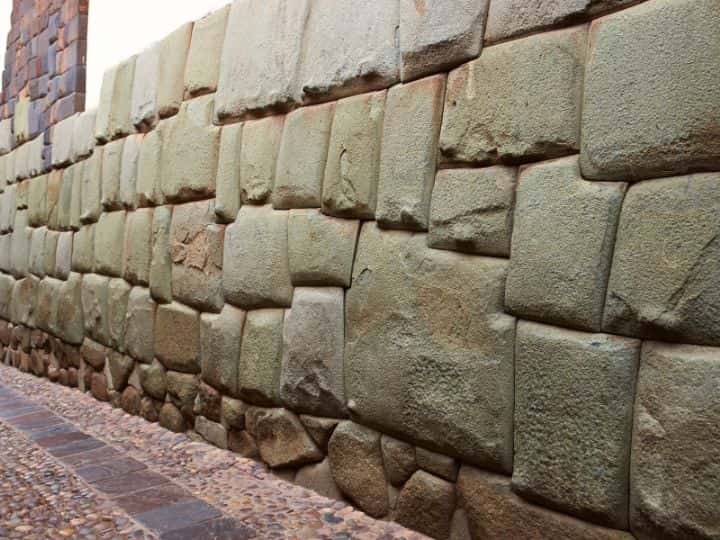
The Twelve-Angled Stone / Top-Rated Attractions in the Sacred Valley
What makes it truly extraordinary is the seamless fit into the surrounding walls, despite its irregular shape and twelve distinct angles.
It is believed to have been part of an Inca palace and showcases the remarkable skill of Inca engineers in working with stone.
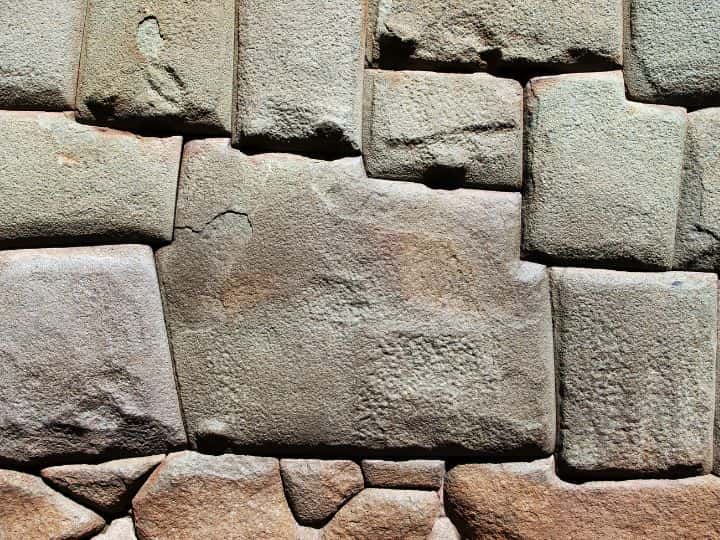
The Twelve-Angled Stone / Top-Rated Attractions in the Sacred Valley
The precision with which the Twelve-Angled Stone was carved and placed is a testament to the advanced architectural techniques employed by the Incas.
To this day, experts marvel at the stone’s perfect fit, achieved without the use of mortar or other binding materials. It’s precise angles and interlocking features have allowed it to withstand centuries of seismic activity, preserving its mesmerizing beauty for generations to admire.
Coricancha – Temple of the Sun: A Sacred Inca Site in the Heart of Cusco
Coricancha, the esteemed Temple of the Sun is located in the heart of Cusco. This sacred site was once the most important religious complex in the Inca Empire.
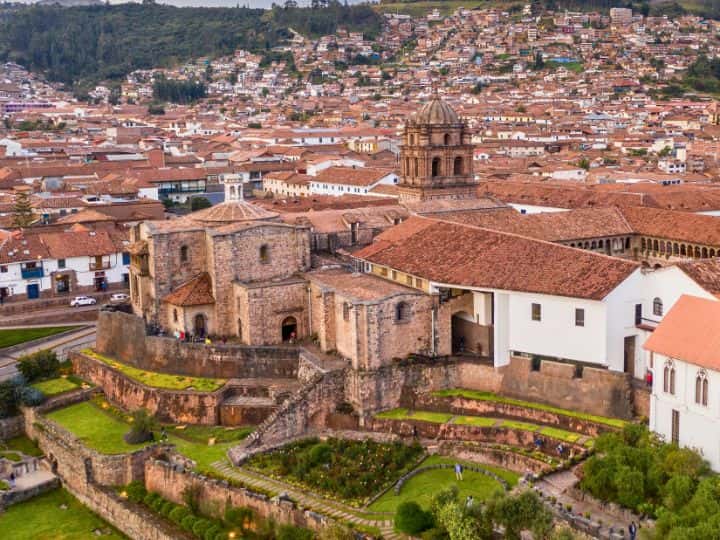
Church of Santo Domingo Built on Top of Coricancha / Top-Rated Attractions in the Sacred Valley
Coricancha, meaning “Golden Enclosure” in Quechua, was revered as the epicenter of Inca religious and ceremonial practices. The temple was dedicated to Inti, the Inca sun god, and was a place of immense significance and reverence. Its walls were once adorned with gold, and its courtyards were filled with precious artifacts and ceremonial offerings.
The architectural brilliance of Coricancha is evident in its precision stonework and expert craftsmanship. The temple’s design reflects the Inca’s deep understanding of astronomy and their ability to align structures with celestial events. Windows and niches were strategically placed to capture the sunlight and create mesmerizing displays of light and shadow.
Sadly, much of the temple’s golden embellishments were looted by the Spanish conquistadors during their colonization of Peru.
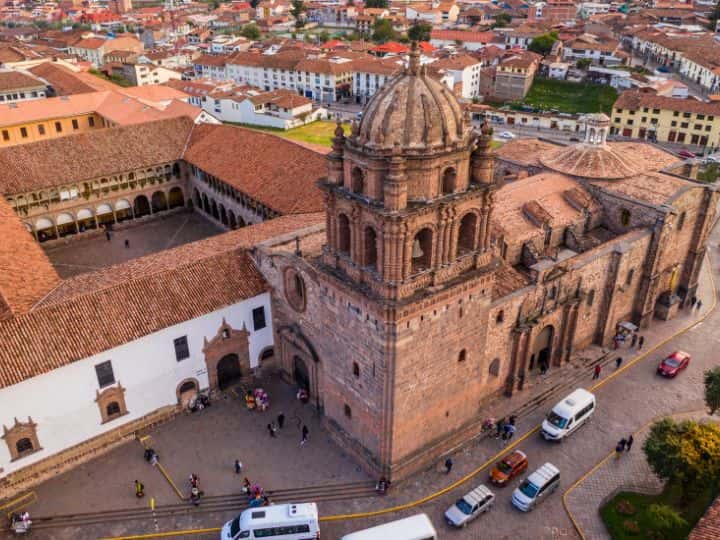
Church of Santo Domingo Built on Top of Coricancha / Top-Rated Attractions in the Sacred Valley
After the Spanish conquest, the conquistadors built the Church of Santo Domingo on top of the ruins of Coricancha. The fusion of Inca and Spanish architectural styles can be observed, with Inca walls serving as the foundation for the colonial church.
Nevertheless, the remaining stone walls of Coricancha continue to inspire awe and admiration, showcasing the architectural prowess of the Inca civilization.
GOOD TO KNOW: Coricancha features a network of underground chambers and passageways that were likely used for various purposes, including storage, ceremonies, and burials. These chambers offer a glimpse into the intricate design and construction of the temple.
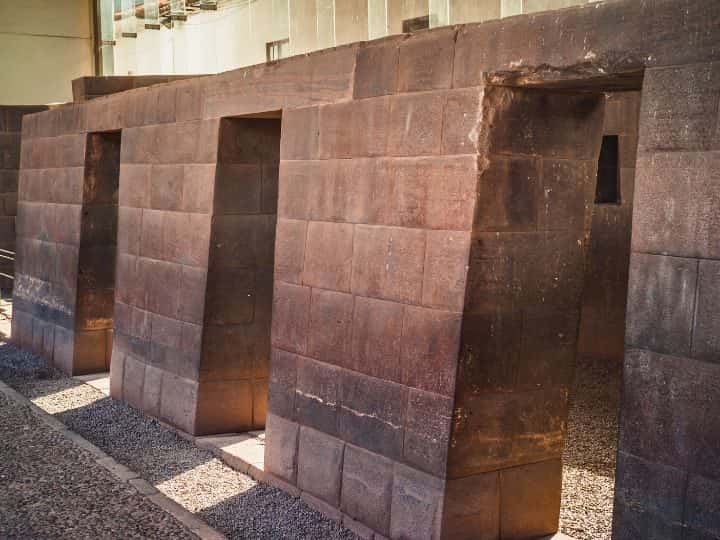
Coricancha Museum / Top-Rated Attractions in the Sacred Valley
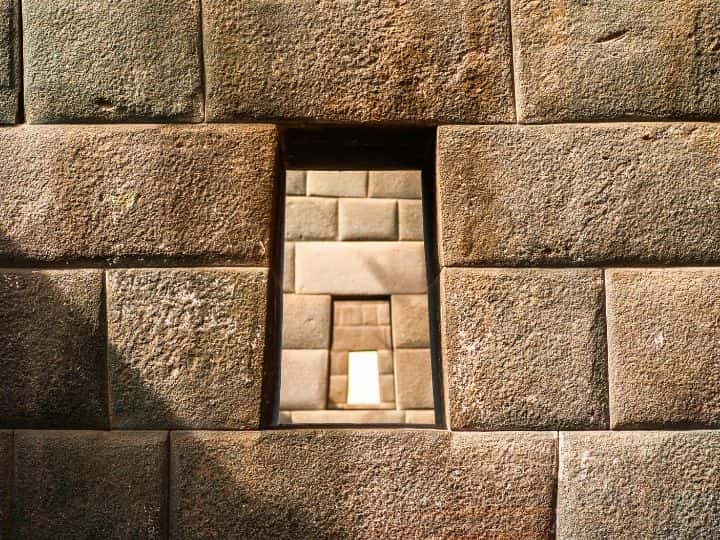
Coricancha Museum / Top-Rated Attractions in the Sacred Valley
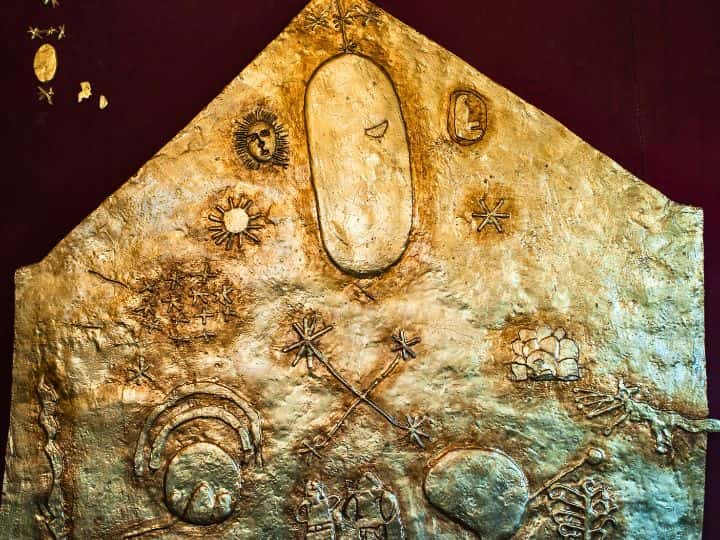
Golden Star Map at the Coricancha Museum / Top-Rated Attractions in the Sacred Valley
Sacsayhuaman: Ancient Ruins and Inca Engineering Marvel
Nestled approximately 2 kilometers (1.2 miles) north of the city of Cusco, making it easily accessible for a day trip from the city center, Sacsayhuaman is an awe-inspiring archaeological site.
Pronounced as “sexy woman” by locals, this ancient Inca fortress is an absolute must-visit when exploring the Sacred Valley.
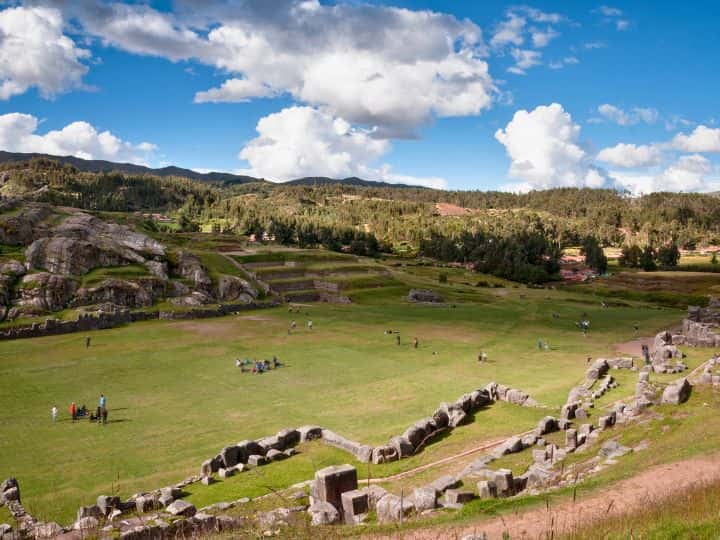
Sacsayhuaman / Top-Rated Attractions in the Sacred Valley
Sacsayhuaman is a testament to the remarkable engineering prowess of the Inca civilization. The megalithic stone walls, some reaching up to 9 meters (30 feet) in height and some weighing up to 200 tons, were meticulously built using precisely cut and interlocking stones, showcasing the Inca’s mastery of stonework.
The incredible precision with which the stones fit together without the use of mortar is a true marvel, that will you in awe of the architectural genius.
Beyond its impressive construction, Sacsayhuaman holds significant historical and cultural importance. It is believed to have been a ceremonial center and military stronghold for the Inca Empire. It is comprised of three distinct levels or platforms, each with its own set of walls. These walls form a zigzag pattern and enclose a large open area, suggesting its function as a ceremonial and military space.
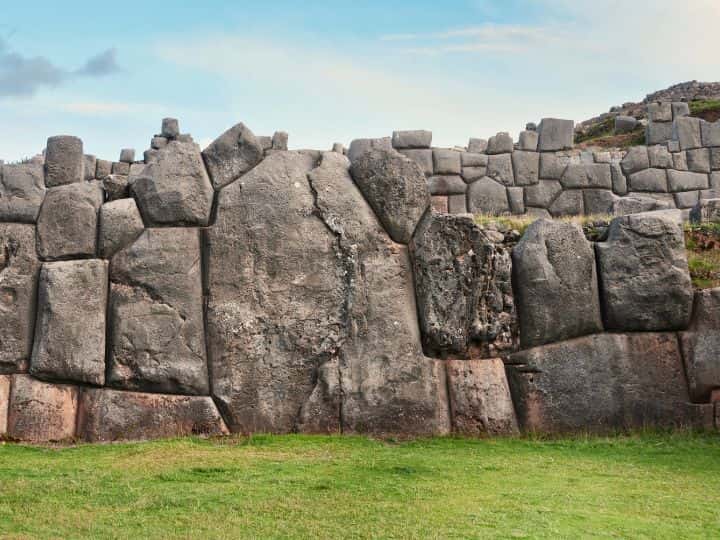
Sacsayhuaman / Top-Rated Attractions in the Sacred Valley
Sacsayhuaman is closely associated with the Inti Raymi festival, a grand celebration of the winter solstice that takes place in Cusco each year. The site serves as the main stage for this festival, reenacting ancient Inca rituals and ceremonies.
The elevated location of Sacsayhuaman provides breathtaking panoramic views of Cusco and the surrounding valleys. You can admire the beauty of the city and the Andean landscape from this vantage point.
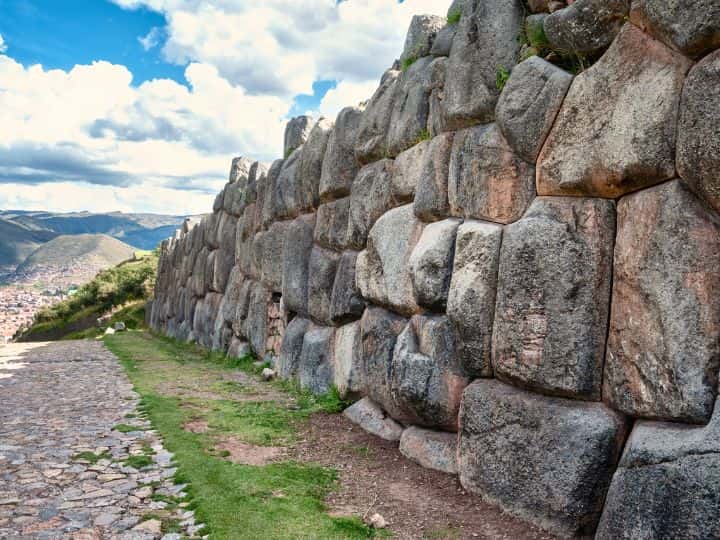
Sacsayhuaman / Top-Rated Attractions in the Sacred Valley
GOOD TO KNOW: Sacsayhuaman is connected to Tambomachay, another Inca archaeological site, by a series of ceremonial roads. These roads were part of the extensive Inca road network, which played a crucial role in connecting various regions of the empire.
Qenko: Mystical Encounters at the Temple of Sacrifice
Deep within the Sacred Valley, hidden amidst the rugged landscape, lies Qenko, an archaeological site shrouded in mystique and intrigue. It is situated approximately 6 kilometers (3.7 miles) northeast of Cusco.
Also known as Q’enqo or Kenko, this ancient site offers a unique glimpse into the spiritual practices of the Inca civilization.
The word “Q’enqo” comes from the Quechua language, and it translates to “labyrinth” or “zigzag.” The name reflects the complex and intricate nature of the site.
The main feature of Qenko is a large carved rock that resembles a natural amphitheater. The rock is intricately carved with channels, seats, steps, and niches, possibly used for ceremonial purposes or as an altar.
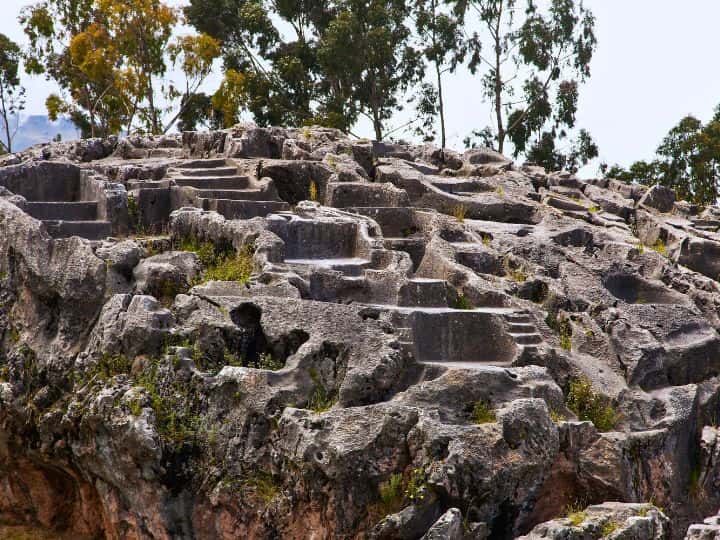
Sacsayhuaman / Top-Rated Attractions in the Sacred Valley
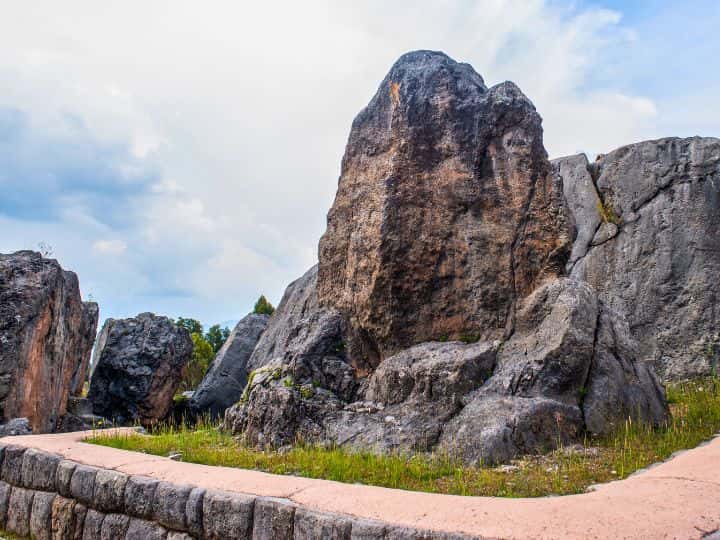
Qenko / Top-Rated Attractions in the Sacred Valley
Qenko holds a significant place in Inca mythology and religious rituals. The site is believed to have been a ceremonial center dedicated to the worship of deities associated with fertility, agriculture, and the cycle of life.
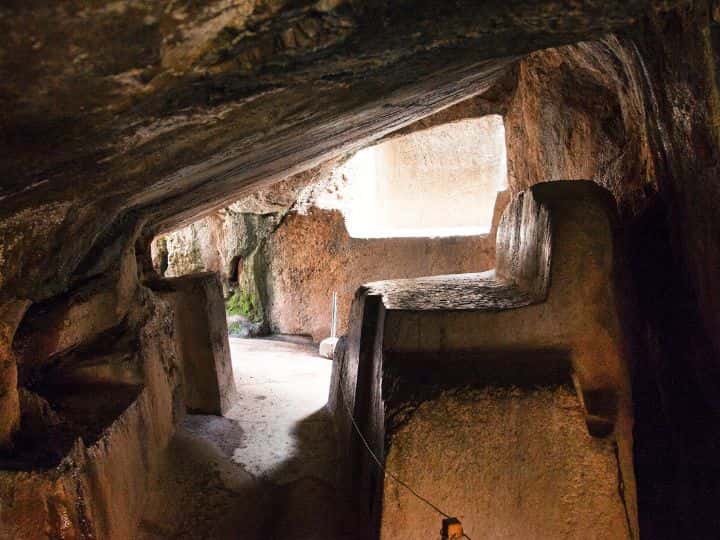
Qenko / Top-Rated Attractions in the Sacred Valley
Qenko features several petroglyphs, which are rock carvings or engravings made by the Incas. These carvings depict various animals, symbols, and geometric shapes, offering insights into Inca symbolism and cosmology.
Puka Pukara: Exploring the Enigmatic Red Fortress
Puka Pukara is situated approximately 7 kilometers (4.3 miles) from Cusco, making it easily accessible for a day trip from the city. It is often visited as part of a tour of the Sacred Valley or combined with other nearby attractions.
Puka Pukara is perched on a hilltop amidst the scenic landscapes of the Sacred Valley, lies Puka Pukara.
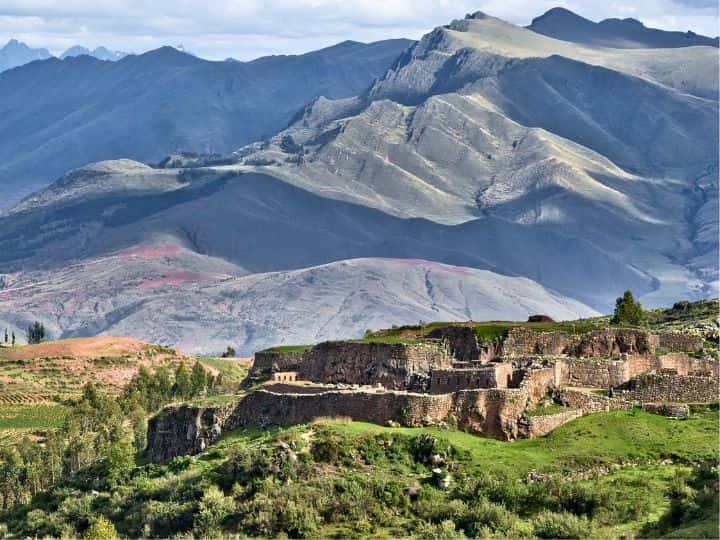
Puka Pukara / Top-Rated Attractions in the Sacred Valley
Known as the “Red Fortress” in Quechua, Puka Pukara stands as a testament to the strategic and defensive prowess of the Inca civilization. As you approach Puka Pukara, you will notice the distinctive reddish color of the stone, giving the site its name.
This ancient fortress is composed of walls, terraces, plazas, and various structures, all ingeniously designed to blend with the natural environment. It is believed that Puka Pukara served as a military outpost, providing protection for nearby settlements and serving as a checkpoint for travelers.
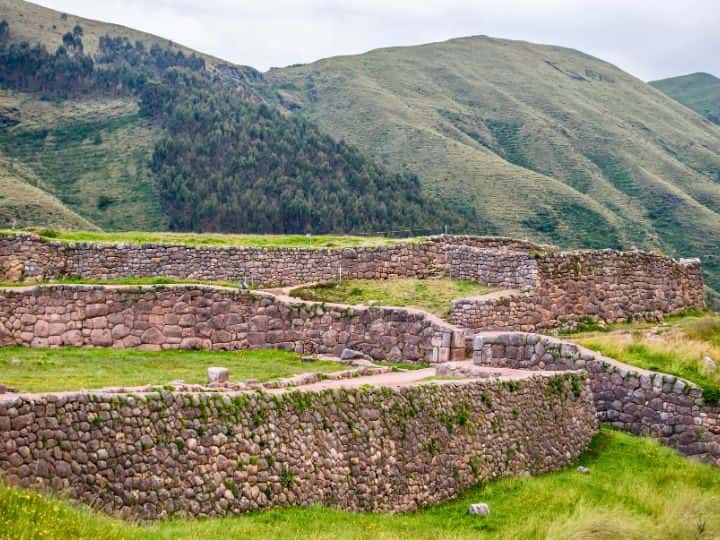
Puka Pukara / Top-Rated Attractions in the Sacred Valley
Beyond its defensive functions, Puka Pukara also held administrative and ceremonial importance. It is thought to have been a resting place for Inca emperors during their journeys through the region.
The site’s strategic location offers breathtaking panoramic views of the surrounding valleys and mountains, making it an ideal spot to appreciate the natural beauty of the Sacred Valley.
Tambomachay: The Mystical Waters of the Inca
Tambomachay, also known as the “Baños del Inca” or the “Inca Baths,” is another fascinating archaeological site located about 8 kilometers (5 miles) from the city of Cusco, making it easily accessible for a day trip from the city.
Tambomachay is characterized by its system of aqueducts, canals, and stone fountains. The stonework is intricate and well-preserved, showcasing the Inca’s advanced engineering skills.
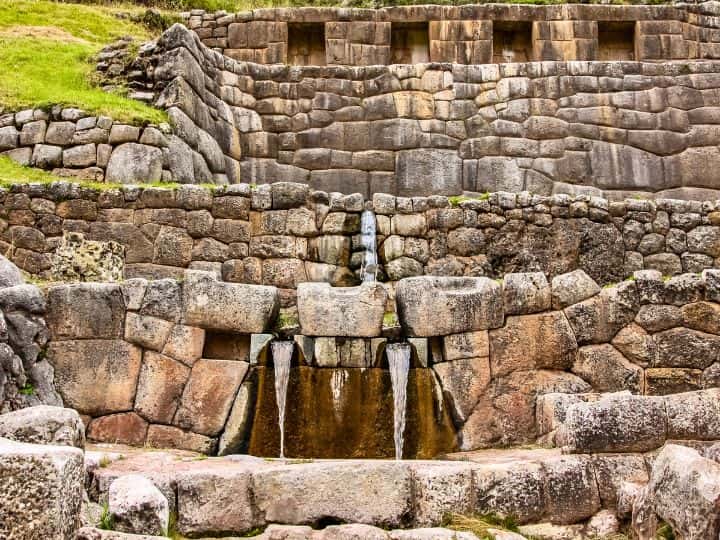
Tambomachay / Top-Rated Attractions in the Sacred Valley
It is believed that it was a site dedicated to water worship and served as a place of retreat for the Inca elite, who would come to seek solace, cleanse themselves, and partake in spiritual rituals. ritual bathing for the Inca elite.
The Inca considered water a sacred element and attributed it with healing and life-giving properties.
Pisac: Ancient Ruins and Vibrant Markets
Pisac is a picturesque town and archaeological site situated approximately 33 kilometers (20 miles) northeast of Cusco. It is renowned for its vibrant market, stunning landscapes, and impressive Inca ruins.
The Pisac ruins are a major highlight of the town. The site features expansive terraces, ceremonial platforms, and intricate stone structures. The ruins are strategically positioned on a hillside, offering breathtaking panoramic views of the surrounding valley.
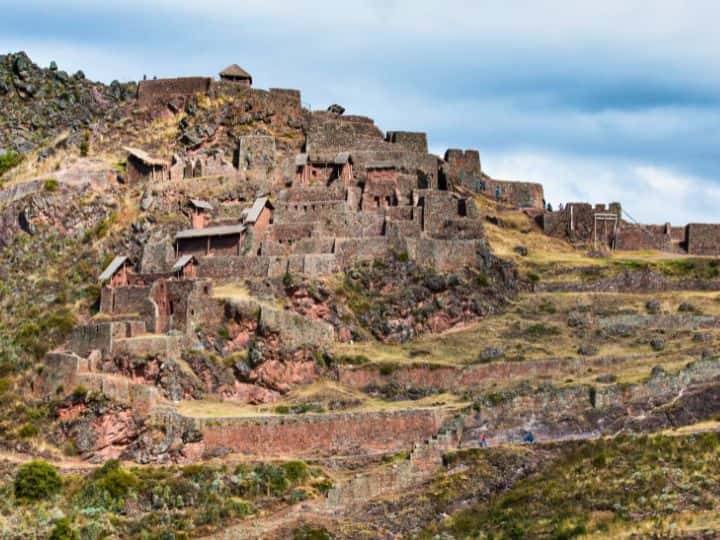
Pisac / Top-Rated Attractions in the Sacred Valley
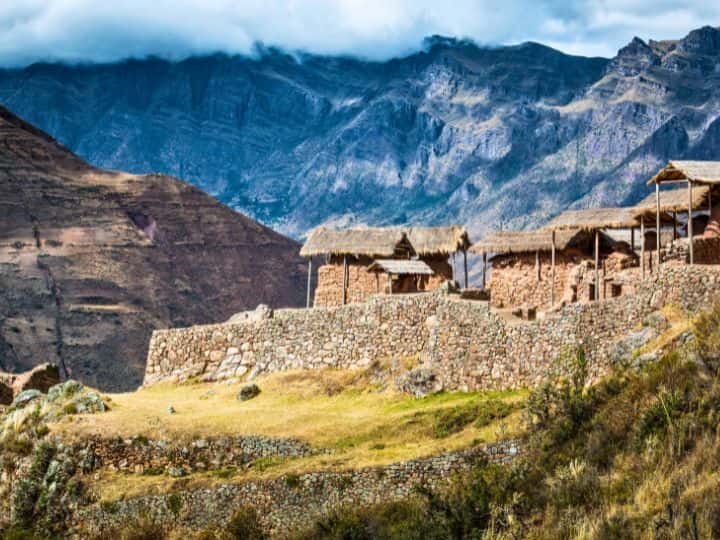
Pisac / Top-Rated Attractions in the Sacred Valley
Within the ruins, you can find the Temple of the Sun. This sacred site was dedicated to worshiping Inti, the Inca sun god. The temple features finely carved stones, intricate stonework, and ceremonial platforms.
Pisac also houses an Intihuatana stone, which served as a solar clock or calendar for the Incas. These stones were used for astronomical observations and ceremonies related to the changing seasons.
Pisac is also known for its well-preserved agricultural terraces, which were used by the Incas for farming purposes. These terraces showcase the Incas’ mastery of engineering and their ability to adapt to the mountainous terrain for agricultural production.
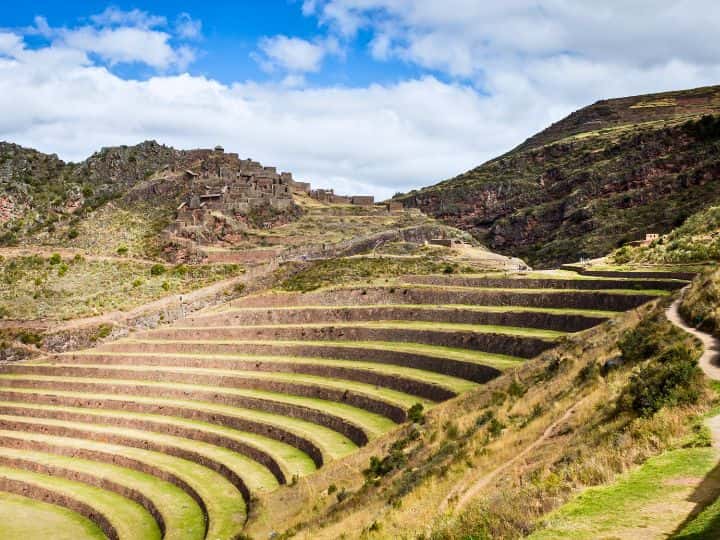
Tambomachay / Top-Rated Attractions in the Sacred Valley
After immersing yourself in the ancient history of Pisac, head down to the town and get ready to be captivated by its vibrant market.
The market is held every Tuesday, Thursday, and Sunday. It is a vibrant hub where locals sell a wide variety of goods, including traditional textiles, handicrafts, pottery, fresh produce, and souvenirs. It is a fantastic place to experience Andean culture and shop for unique items.
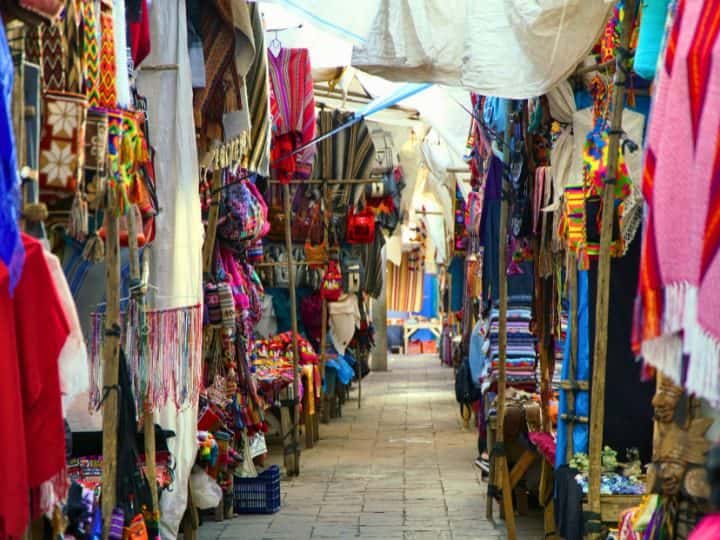
Market in Pisac / Top-Rated Attractions in the Sacred Valley
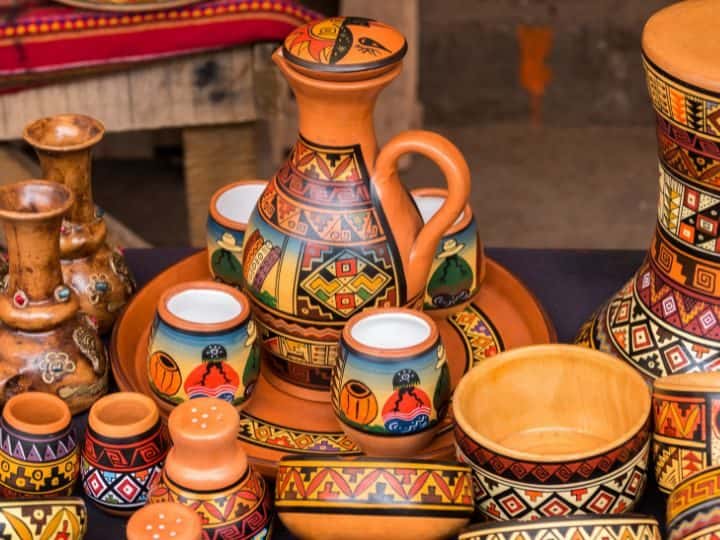
Market in Pisac / Top-Rated Attractions in the Sacred Valley
PRO TIP: Pisac offers numerous hiking trails that will allow you to explore the stunning natural landscapes of the Sacred Valley. From gentle walks to more challenging treks, you can enjoy the beauty of the Andean mountains, rivers, and valleys.
Chinchero: A Cultural Haven of Textiles and Inca Heritage
Chinchero is a small village located in the Sacred Valley of Peru, about 28 kilometers (17 miles) northwest of Cusco.
The town is famous for its textile craftsmanship, which has been passed down through generations. Local weavers use age-old techniques to create intricate textiles using vibrant natural dyes and intricate patterns, keeping alive the heritage of their ancestors.
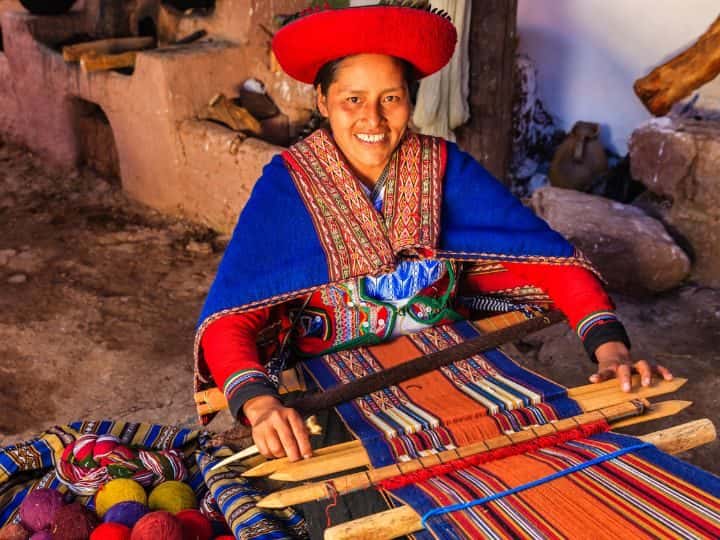
Weaving in Chinchero / Top-Rated Attractions in the Sacred Valley
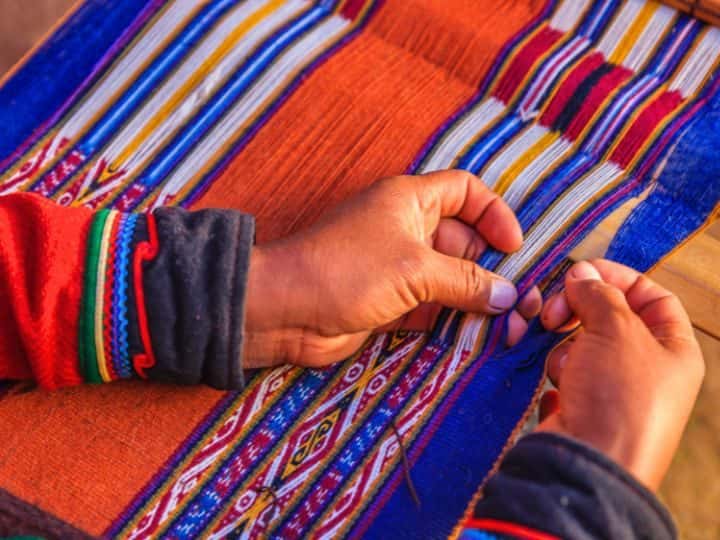
Weaving in Chinchero / Top-Rated Attractions in the Sacred Valley
One of the highlights of Chinchero is the Sunday market, where locals proudly display their handcrafted textiles and traditional goods. It is fun to stroll through the bustling market stalls and admire the colorful array of fabrics, and witness the skillful weavers at work. This is an excellent opportunity to support local artisans and take home a unique piece of Andean craftsmanship.
In addition to its rich textile heritage, Chinchero is home to significant archaeological ruins. The Inca site of Chinchero showcases the remains of an ancient palace and temple complex, adorned with impressive stone walls and terraces. The site offers panoramic views of the surrounding landscapes, providing a glimpse into the strategic importance of Chinchero in Inca times.
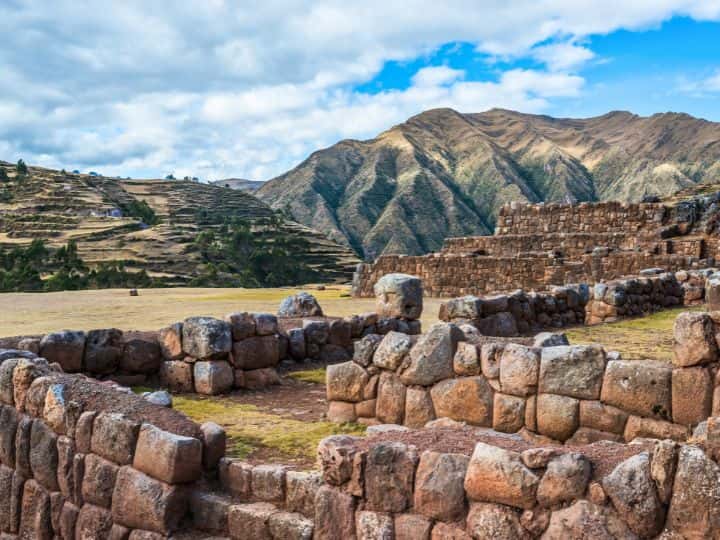
Archaeological Ruins in Chinchero / Top-Rated Attractions in the Sacred Valley
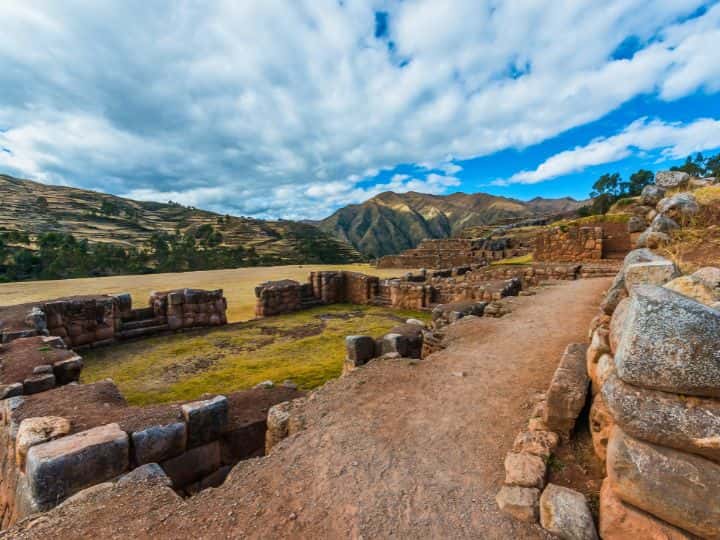
Archaeological Ruins in Chinchero / Top-Rated Attractions in the Sacred Valley
Chinchero is also known for its beautiful colonial church, the Church of Our Lady of Monserrat. Built on the foundations of an Inca palace, the church is a blend of Inca and Spanish architectural styles. Inside, you can admire intricate colonial artwork and religious paintings.
The surrounding landscape of Chinchero is characterized by terraced fields that were originally built by the Incas for agricultural purposes. These terraces are still used by local farmers to cultivate crops such as potatoes, corn, and quinoa.
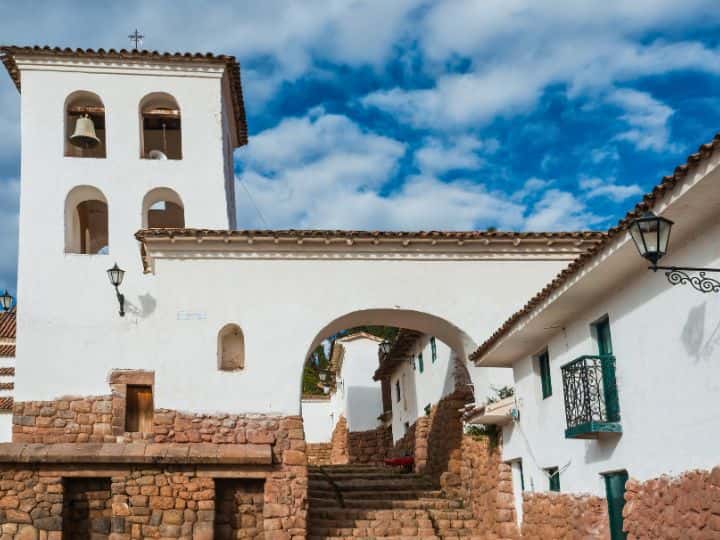
Church of Our Lady of Monserrat in Chinchero / Top-Rated Attractions in the Sacred Valley
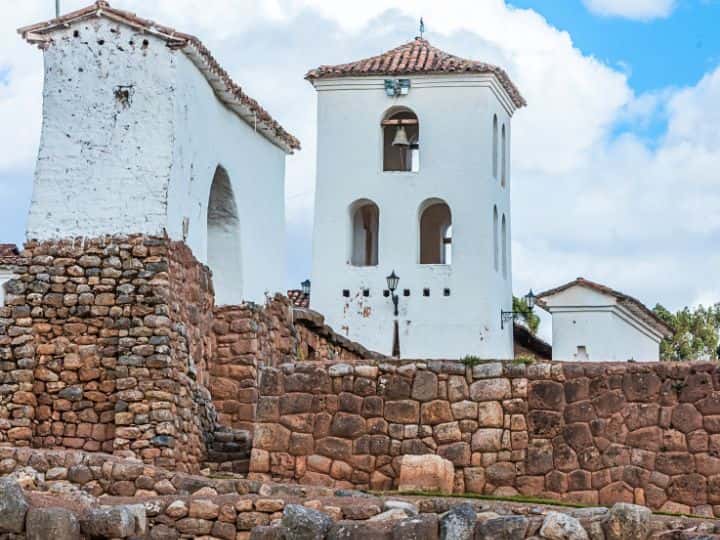
Church of Our Lady of Monserrat in Chinchero / Top-Rated Attractions in the Sacred Valley
Chinchero is known for its vibrant festivals and traditional celebrations throughout the year. The most famous festival is the Virgen de la Natividad, which takes place in September and combines Inca and Catholic traditions.
PRO TIP: Chinchero is situated at an altitude of about 3,762 meters (12,343 feet), providing breathtaking views of the Sacred Valley and the snow-capped mountains in the distance. The picturesque landscapes offer great opportunities for photography and hiking.
Maras: Salt Ponds and Scenic Splendor
Nestled in the highlands of the Sacred Valley, approximately 40 kilometers (25 miles) northwest of Cusco, the small town of Maras offers a unique and captivating attraction: the Maras Salt Ponds. This natural wonder is a testament to the ingenuity and resourcefulness of the Inca civilization.
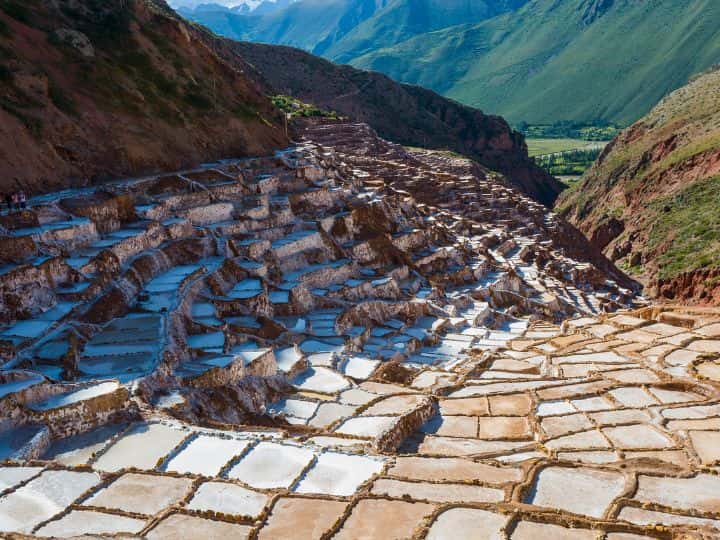
Maras Salt Mines / Top-Rated Attractions in the Sacred Valley
The Maras Salt Ponds, known locally as “Salineras,” are a series of thousands of salt-evaporation ponds terraced into the mountainside that is fed by a natural saltwater spring. As the water evaporates, the salt crystallizes, and the local community harvests the salt.
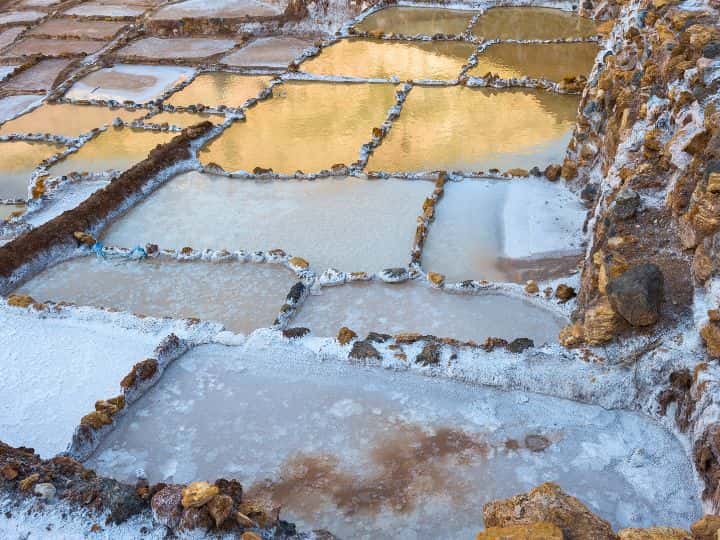
Maras Salt Mines / Top-Rated Attractions in the Sacred Valley
For centuries, the local community has harvested salt from these ponds using a traditional and sustainable method. The stark contrast between the white salt ponds and the surrounding red hills creates a visually striking landscape, making it a photographer’s paradise.
Moray: Exploring Agricultural Ingenuity and Ancient Experimentation
Moray is an archaeological site located in the Sacred Valley of Peru, near the town of Maras and approximately 50 kilometers (31 miles) northwest of Cusco. Known as the “Inca agricultural laboratory,” Moray showcases the Inca civilization’s remarkable knowledge of farming techniques and their ability to adapt to diverse landscapes.
Moray features a series of concentric terraced circular depressions carved into the earth. These depressions, resembling amphitheaters, vary in depth and diameter, with the largest measuring around 30 meters (98 feet) deep. The terraces create microclimates with different temperature variations, allowing the Incas to experiment with various crops.
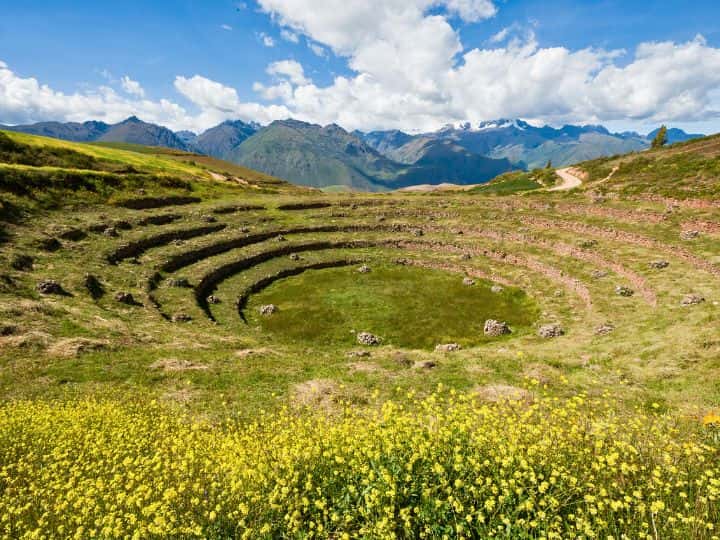
Moray / Top-Rated Attractions in the Sacred Valley
The Incas used Moray as an agricultural laboratory. Each terrace had its own microclimate, mimicking different altitudes and growing conditions. The Incas tested and adapted crops to these varying environments, contributing to their advanced understanding of agriculture.
The temperature difference between the top and bottom terraces of Moray can vary by as much as 15 degrees Celsius (27 degrees Fahrenheit). The Incas took advantage of these variations to determine the optimal conditions for growing different types of crops.
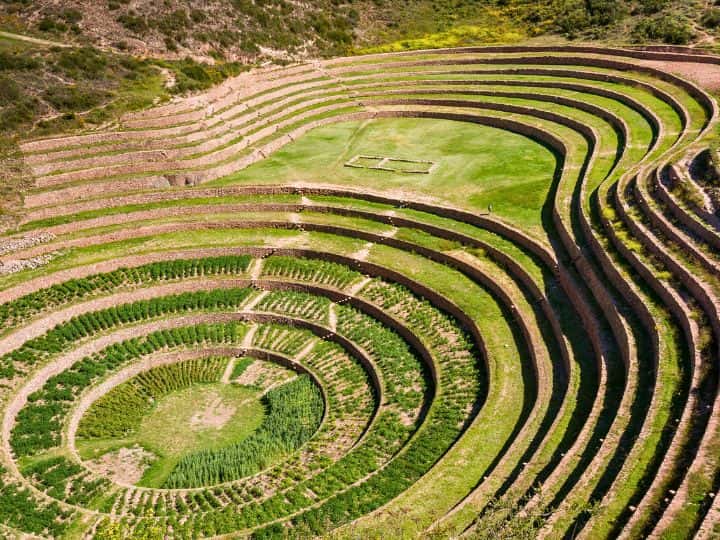
Moray / Top-Rated Attractions in the Sacred Valley
The construction of the terraces at Moray demonstrates the Incas’ advanced knowledge of engineering and hydrology. The terraces were carefully constructed to retain moisture and drain excess water, creating ideal conditions for crop cultivation.
Moray likely held spiritual significance for the Incas due to its unique and awe-inspiring design. The circular shape and the impressive scale of the site suggest a connection with Inca cosmology and their reverence for nature and the land.
Ollantaytambo: Exploring Ancient Ruins and Living History
Ollantaytambo is a historic town located in the Sacred Valley of Peru, approximately 72 kilometers (45 miles) northwest of Cusco. It is a significant archaeological site and a gateway to the famous Inca Trail leading to Machu Picchu.
Ollantaytambo’s main attraction is its impressive archaeological site, which served as both a ceremonial center and a fortress during the Inca Empire. The site is characterized by towering stone terraces, intricate stone masonry, and massive carved stones that were transported from distant quarries. As you explore the ruins, you will be in awe of the precision and skill with which these structures were built.
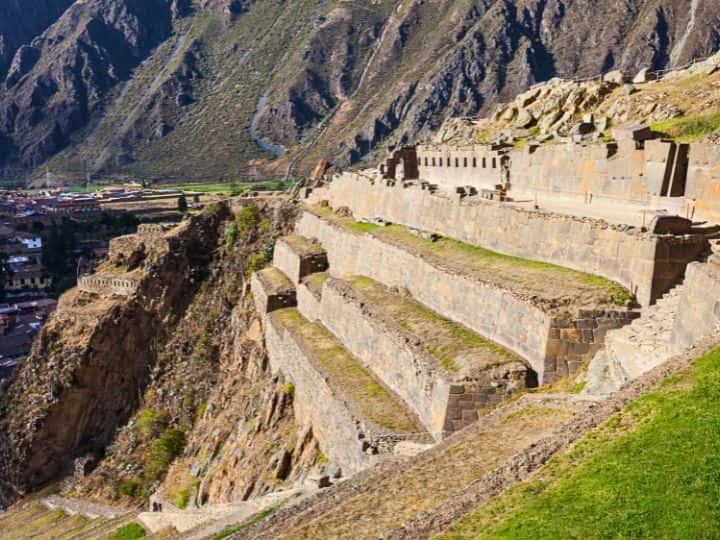
Ollantaytambo / Top-Rated Attractions in the Sacred Valley
One of the most remarkable features of Ollantaytambo is the Temple of the Sun, an intricately carved structure that showcases the Inca’s reverence for celestial bodies and their sophisticated understanding of astronomy.
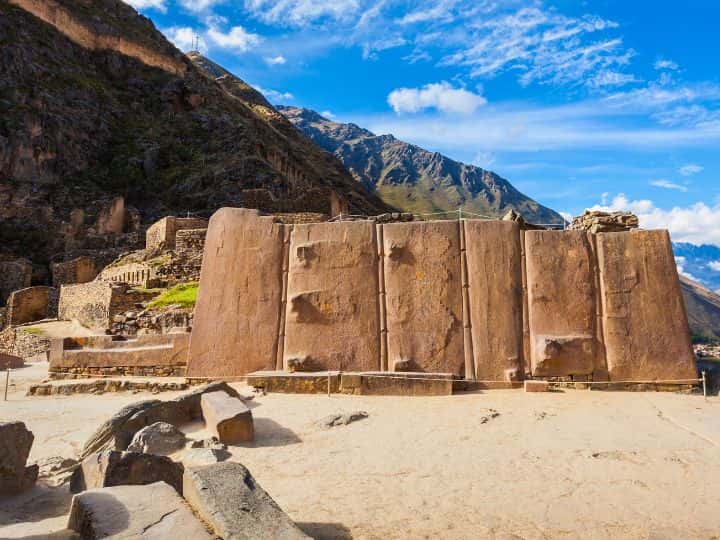
Ollantaytambo / Top-Rated Attractions in the Sacred Valley
The town of Ollantaytambo is also famous for its well-preserved Inca street grid, which still follows the original layout designed by the Incas. Walking through the narrow cobblestone streets, you will encounter Inca walls that have stood the test of time, as well as colonial-era buildings that blend harmoniously with ancient architecture.
The town has an elaborate system of water channels that the Incas engineered to distribute water for agricultural purposes and domestic use. These channels demonstrate the advanced hydraulic engineering of the Incas.
Raqchi: Discovering the Temple of Wiracocha
Raqchi, also known as Raqch’i or Temple of Wiracocha, is an archaeological site located in the Andean region of Peru, approximately 122 kilometers (76 miles) southeast of Cusco.
The main attraction at Raqchi is the Temple of Wiracocha, which is considered one of the largest and most important Inca structures ever built. The temple measures approximately 92 meters (302 feet) in length and 25.5 meters (84 feet) in width. It consists of a central adobe wall with stone foundations and multiple rectangular niches.
The Temple of Wiracocha at Raqchi exhibits the typical Inca architectural style, characterized by large stone walls and precision in stone fitting. The site also features other structures, such as living quarters, storehouses, and terraces.
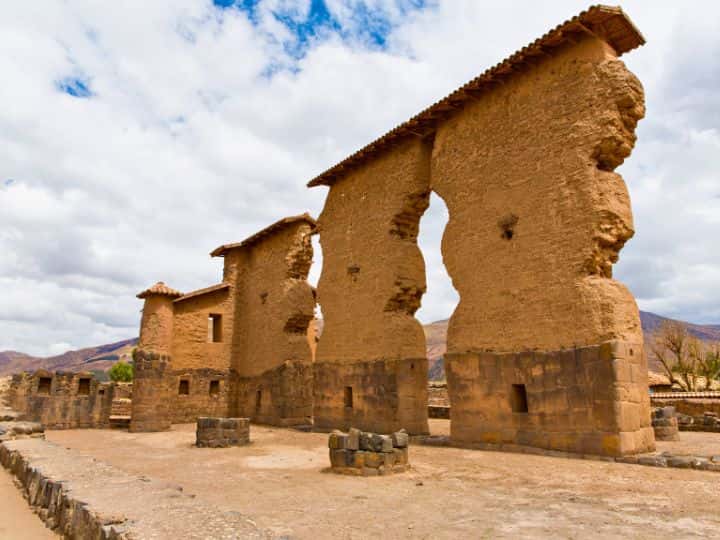
Raqchi / Top-Rated Attractions in the Sacred Valley
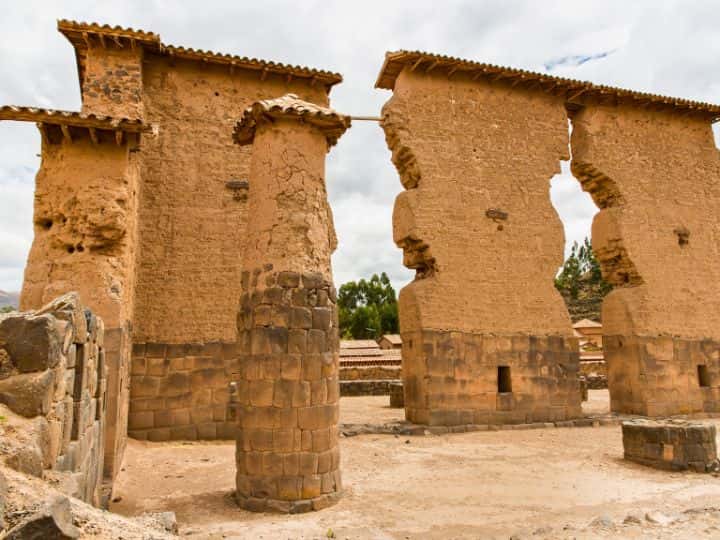
Raqchi / Top-Rated Attractions in the Sacred Valley
Raqchi is not only known for it’s temple but also for its well-preserved Inca agricultural terraces. These terraces, still used by local farmers today, serve as a reminder of the Inca’s mastery of farming techniques and their ability to cultivate the land in harmony with nature.
Adjacent to the archaeological site, there is a small museum that displays artifacts and archaeological findings from Raqchi. The museum provides additional insights into the history and culture of the Incas.
Raqchi is known for its vibrant celebration of the Inti Raymi festival, an ancient Inca festival honoring the sun god Inti. The festival takes place annually on June 24th and involves colorful processions, music, dancing, and reenactments of Inca rituals.
Tipón: Unveiling the Engineering Marvels of the Inca
Nestled in the lush countryside of the Sacred Valley, the archaeological site of Tipón is a hidden gem. It is located approximately 23 kilometers (14 miles) southeast of the city of Cusco. It is known for its impressive Inca terraces, intricate waterworks, and beautiful gardens.
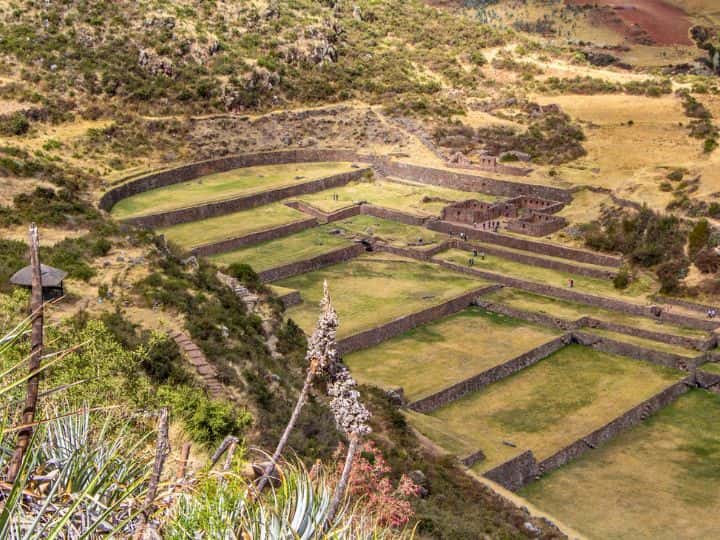
Tipon / Top-Rated Attractions in the Sacred Valley
At the heart of Tipón lies a sophisticated irrigation system that channels water from natural springs and distributes it throughout the terraced fields.
As you explore the site, you will witness the ingenuity of the Inca’s hydraulic engineering, with its precisely constructed stone channels and meticulously designed water flow.
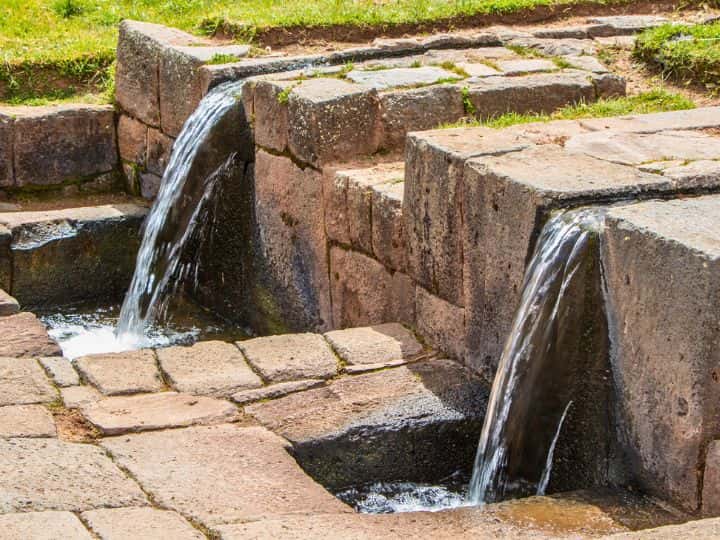
Tipon / Top-Rated Attractions in the Sacred Valley
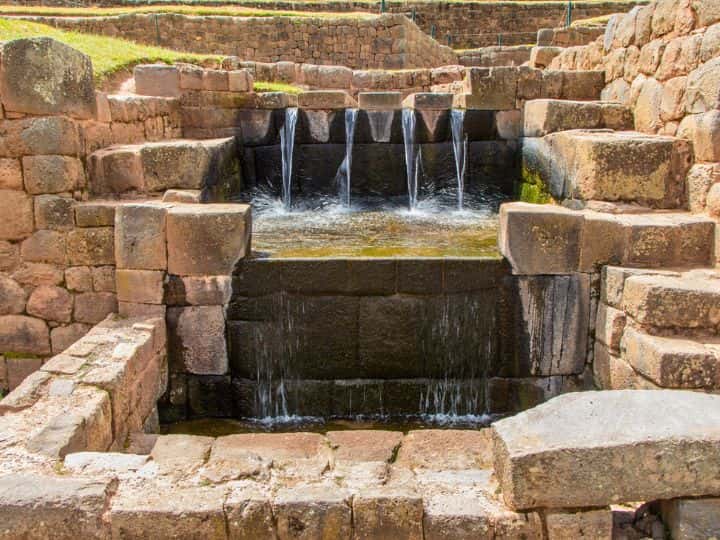
Tipon / Top-Rated Attractions in the Sacred Valley
The terraces of Tipón are a testament to the Inca’s agricultural expertise, as they were designed to take advantage of varying microclimates and optimize crop production.
Tipón includes a temple complex with several structures dedicated to worship and ceremonies. The main temple, known as the Temple of Water, is believed to have had important religious significance for the Incas.
Tipón is famous for its well-maintained gardens and orchards. The Incas created beautiful landscaped areas with a variety of plants, flowers, and fruit trees. The gardens are a testament to the Inca’s appreciation for aesthetics and their ability to create harmonious natural environments.
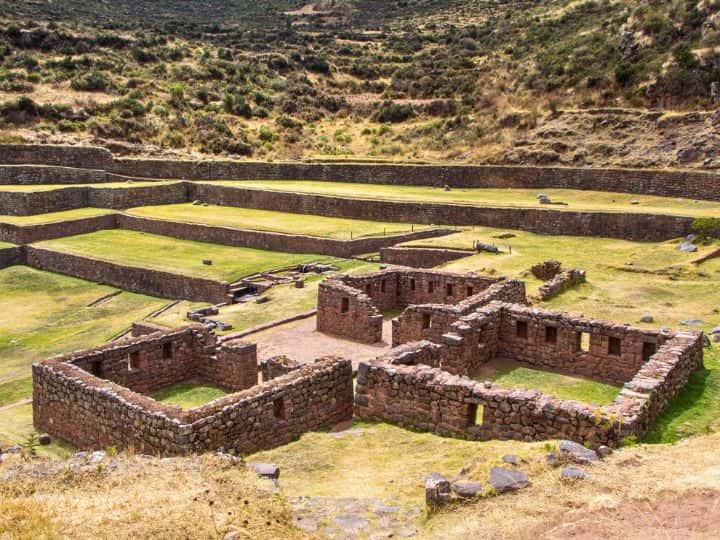
Tipon / Top-Rated Attractions in the Sacred Valley
Intrepid Scout's Tips for Visiting Ollantaytambo
- In order to enter the archaeological sites in Sacred Valley, you will need Cusco Tourist Ticket. Check out my post which lists different options and prices. Select the option that is the best for your itinerary.
- If your time is limited, then ask your hotel to get you a taxi or a private car/driver so that you can get to as many places in Sacred Valley as possible. The roads are in poor condition, so give yourself extra time in order to get to all the sites.
- Stay in Cusco and make Cusco your base camp for all the day trips. Stay in the San Blas section in Cusco.
- Arrive early in the morning to beat the crowds and have a more peaceful and immersive experience at the sites.
- Wear comfortable clothing suitable for walking, also wear sturdy and comfortable shoes or hiking boots to navigate the sites with ease.
- Bring a water bottle and stay hydrated throughout your visit. It is important to drink plenty of water, especially at high altitudes.
- Wear sunscreen, a hat, and sunglasses to protect yourself from the sun’s rays. Consider wearing a lightweight, long-sleeved shirt for additional protection.
- Consider hiring a local guide to enhance your experience. They can provide fascinating insights, historical context, and stories about the site, making your visit even more enriching.
- Think about joining a guided tour to take the stress out of figuring out transportation details. Here are a couple of tours worth checking out:
Pisac Inca Town, Artisan Market, and Ollantaytambo Full-Day Tour from Cusco
This is a full-day tour to the Sacred Valley, Pisac, and Ollantaytambo from Cusco. You will visit the local market in the picturesque town of Pisac, and enjoy a guided tour of Ollantaytambo and the Temple of the Sun Guide. Guide, lunch, and round-trip hotel transfers are included.
The Ultimate Sacred Valley tour: 1 day of Inca history, lifestyle, landscapes
This comprehensive full-day excursion is ideal for travelers with limited time in the region. Alongside a small group and local guide, visit Maras, Moray, Pisac, and Ollantaytambo in an unconventional order to avoid other tour groups and enjoy a more intimate experience.
You Might Also Like:
BEST TIME to VISIT MACHU PICCHU (Top #1 Month for Ultimate Adventure)
Best SELF-GUIDED MACHU PICCHU TOUR (Explore 11 Marvels of Inca Citadel)
How to See the Mesmerizing SUNRISE at MACHU PICCHU (9 Steps to Witness the Magic)
9 Best PHOTOGRAPHY LOCATIONS at MACHU PICCHU (+Useful Photo Tips)
9 Top THINGS to DO at MACHU PICCHU (Unveiling the Enchanted City of the Incas)
How to Reach Machu Picchu Without Hiking (2 Easy Steps!)
Hiking to MACHU PICCHU from AGUAS CALIENTES in 4 Easy Steps
7 Fun and Cool THINGS to DO in AGUAS CALIENTES (Besides Machu Picchu)
Cusco to Maras Salt Mines: 6 Things to Discover in Sacred Valley’s Natural Wonder
What to Pack for Peru: 14 Detailed Essentials for an Adventure-Filled Exploration
Amazing 2 Days in Cusco (Explore Cusco’s Cultural Treasures)
Did You Find This Useful?
Why Not Save Top-Rated Attractions in the Sacred Valley to Your Pinterest Board!
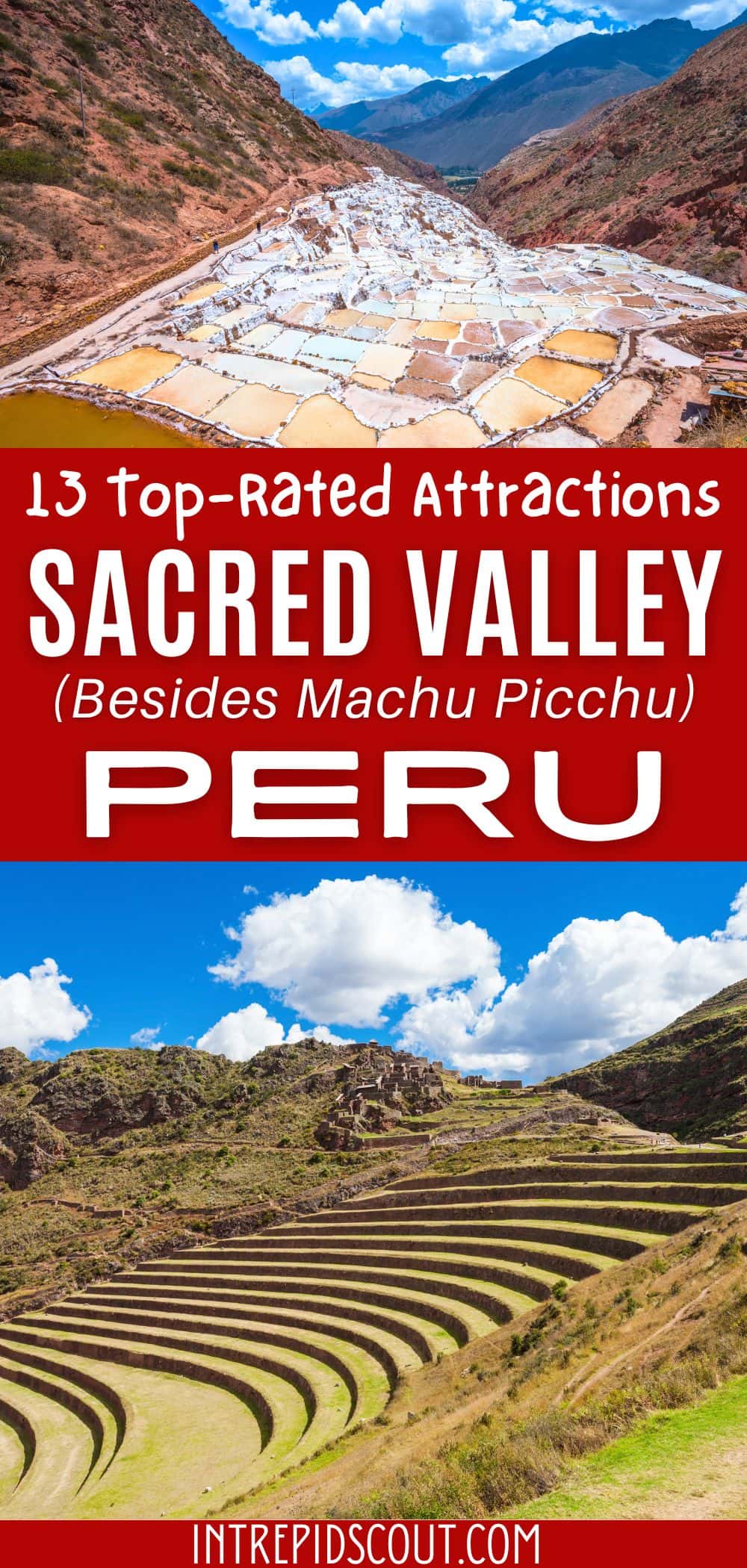
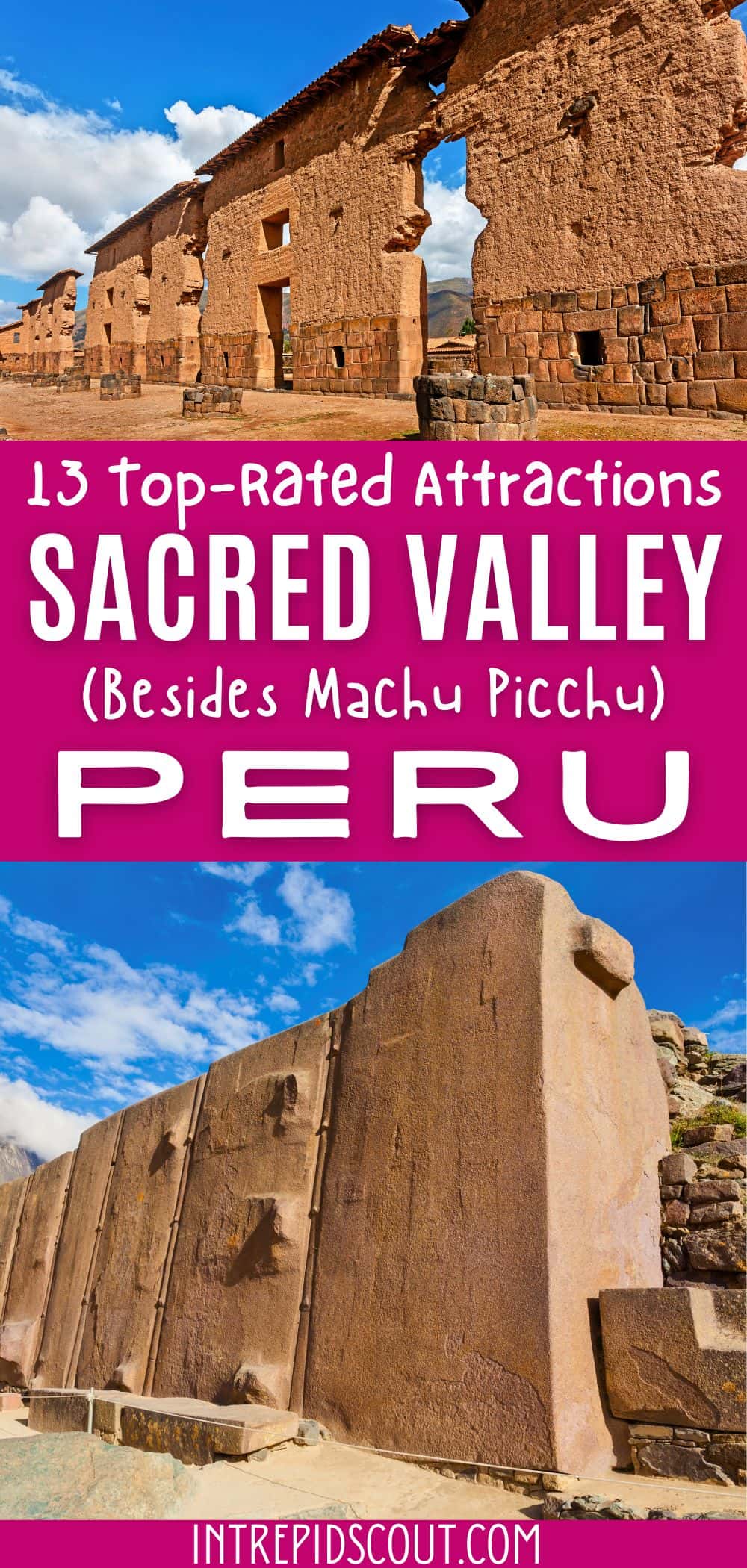
Now, It Is Your Turn, I Would Like to Hear Back from You!
Are you planning a trip to Peru?
Please let me know! Drop me a quick comment right below!
Click on any of the images below to get inspired and to help you with the planning process for your trip to Peru!
